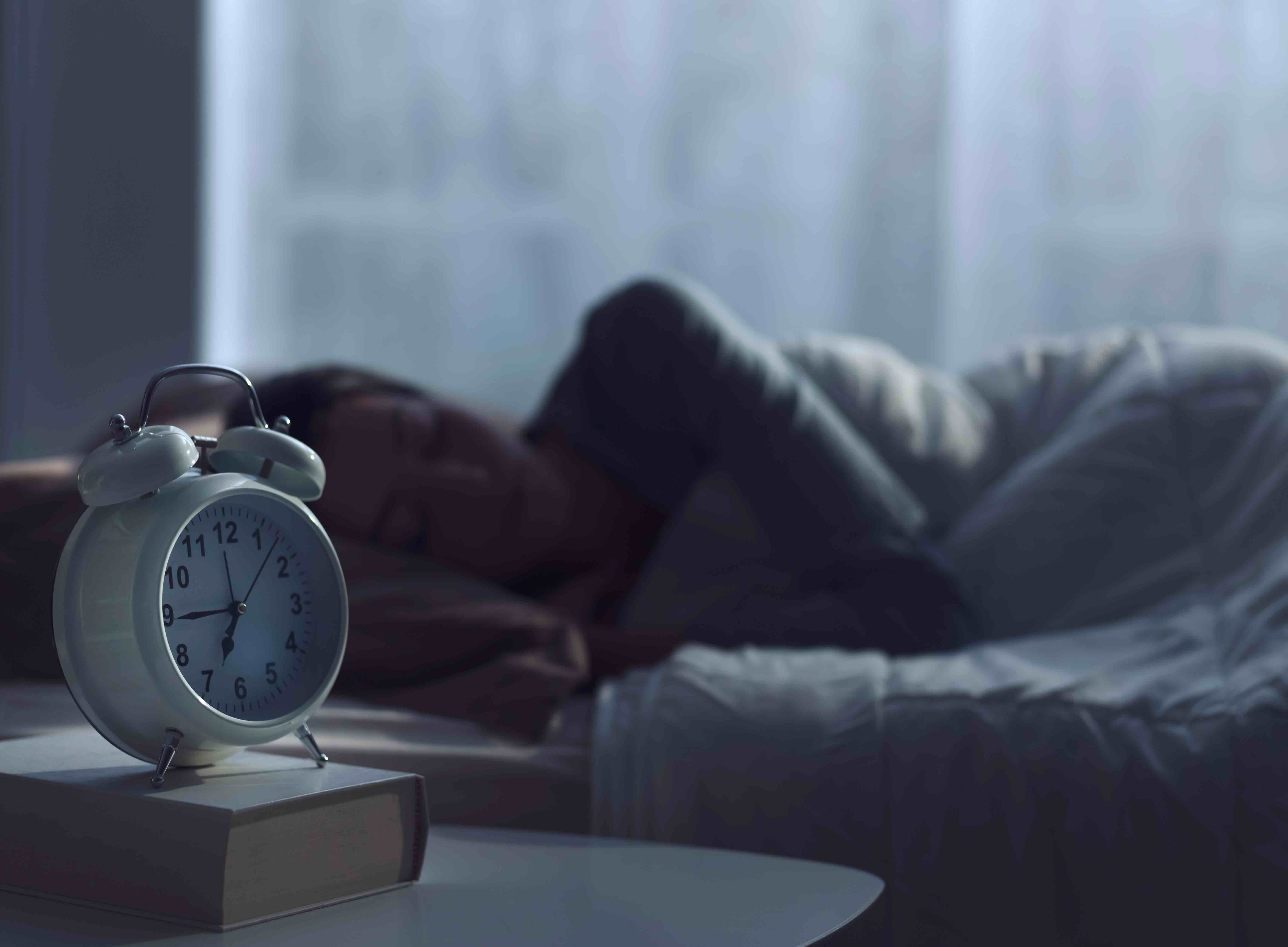- Center on Health Equity & Access
- Clinical
- Health Care Cost
- Health Care Delivery
- Insurance
- Policy
- Technology
- Value-Based Care
Study Validates Smartphone Analysis for Predicting Obstructive Sleep Apnea
Findings show breathing sounds recorded by smartphones during sleep at home can reliably identify obstructive sleep apnea, presenting an innovative and accessible alternative to traditional in-laboratory polysomnography.
Study results demonstrate that breathing sounds recorded by smartphones during sleep at home can reliably identify obstructive sleep apnea (OSA), presenting an innovative and accessible alternative to traditional in-laboratory polysomnography (PSG). Between February 2022 and February 2023, researchers aimed to validate the efficacy of a prediction model for OSA using breathing sound recorded from smartphones, specifically those with iOS and Android operating systems, in conjunction with level 2 PSG conducted at home.
Women sleeping next to alarm clock | Image Credit: stokkete - stock.adobe.com.jpg

The prospective diagnostic study, published in JAMA Otolaryngology: Head & Neck Surgery, involved participants 19 years and older who underwent unattended level 2 home PSG. Breathing sounds were simultaneously recorded using smartphones in the participants' own home environment. The study included individuals with diagnosed OSA and those without a previous diagnosis.
Of the 101 participants, with a mean age of 48.3 years, and a near equal gender distribution, the predictive model's performance was assessed at different apnea-hypopnea index (AHI) levels.
For the iOS smartphone, the data revealed notable performance metrics in predicting OSA. Sensitivity values at different AHI levels, including 5, 15, and 30 per hour, were consistently high at 92.6%, 90.9%, and 93.3%, respectively. Specificities registered at 84.3%, 94.4%, and 94.4%, indicating the model's precision in correctly identifying non-OSA instances. The accuracy rates underscored the reliability of the predictive model, standing at 88.6%, 93.3%, and 94.3% across the corresponding AHI levels.
The Android smartphone also exhibited predictive capabilities for OSA. Sensitivity values at AHI levels of 5, 15, and 30 per hour were consistently high at 92.2%, 90.0%, and 92.9%, indicating the model's effectiveness in identifying true positive cases. Specificities were measured at 84.0%, 94.4%, and 94.3%, highlighting the model's proficiency in correctly recognizing non-OSA instances. Overall, the accuracy rates further emphasize the reliability of the predictive model for the Android smartphone, reaching 88.1%, 93.1%, and 94.1% at AHI levels of 5, 15, and 30 per hour, respectively.
“This diagnostic study has produced promising results regarding the performance of smartphone-based prediction of AHI in a home setting,” the researchers wrote. “The validation of smartphone AHI with level 2 home PSG as a reference suggests that a future scenario in which clinicians use both in-laboratory PSG and home smartphones to comprehensively assess the sleep characteristics of patients with OSA over multiple nights is within reach.”
The study authos acknowledged several limitations to their findings. They focused solely on total AHI without investigating AHI changes in different patient positions during sleep, and due to reliance on smartphone-recorded breathing sounds, the study lacked data on positional changes and oxygen saturation, restricting analysis of their impact on AHI.
Secondly, the study's exclusively Korean participant pool and small validation population limited the generalizability of the prediction model to other racial and ethnic groups. To address this, future studies should involve a larger and more diverse participant sample, according to the study findings.
The researchers also recognized the well-documented issue of level 2 home PSG results underestimating OSA and AHI levels compared with level 1 in-laboratory PSG. Despite high accuracy in relation to level 2 home PSG, the model may still underestimate OSA and AHI levels.
Despite these limitations, the study represents a significant advancement in validating a deep-learning model for predicting OSA using smartphone-recorded breathing sounds.
“By harnessing the convenience and accessibility of smartphones, our prediction model offers the potential for a more holistic understanding in individuals’ sleep patterns beyond the limitations of the sleep laboratory,” the researchers concluded. “However, it is important to acknowledge that continuous refinement and validation of the model will be critical to ensure the accuracy and reliability of the results.”
Reference
Han SC, Kim D, Rhee C, et al. In-home smartphone-based prediction of obstructive sleep apnea in conjunction with level 2 home polysomnography. JAMA Otolaryngol Head Neck Surg. Published online November 16, 2023. doi:10.1001/jamaoto.2023.3490
